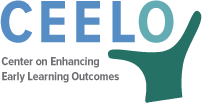Understanding child development serves as the fundamental building block for ensuring effective and appropriate programs, practices, and policies are in place to support young children’s development and learning. When children lack a strong foundation, teaching and learning become more difficult and costly with full potential often unrealized.
Brain Development – The human brain undergoes its most rapid development during the first five years and establishes the neurological foundation for subsequent development and learning. Advances in neuroscience have direct implications for understanding how children develop and impact of adverse influences.
Resources
- NAEYC 12 Principles of Child Development
- Rethinking the Brain: New Insights into Early Development (Shore, 1997).
- From Neurons to Neighborhoods: The Science of Early Childhood Development (Shonkoff & Phillips, eds. 2000)
- Brain Architecture (Center on the Developing Child)
- Toxic Stress (Center on the Developing Child)
Activities
- The Brain Architecture Game
- Synapses and Pruning
Whole Child – Children’s development is a complex, dynamic, multidimensional phenomenon involving five main dimensions of growth, all of which are intertwined and interdependent: Physical Development and Well-being; Social and Emotional; Cognitive; Approaches to Learning; and Communication, Language and Literacy. Over-emphasizing a single domain may be counterproductive to maximizing children’s potential.
Resources
- Reconsidering children’s early development and learning: Toward common views and vocabulary (National Education Goals Panel, 1998)
Ages and Stages – A 3-year-old is quite different from a third grader. Promoting the optimal development and learning of children of different ages appropriately requires an understanding of the predictable developmental stages across all domains which children typically progress through as they grow older.
- Infant (birth – 18 months)
- Toddler (18 months – 3 years)
- Preschool (3 and 4 years)
- School-age (5 years +)
Resources
- Developmental Milestones (Center for Disease Control and Prevention), Child Development
- State specific early learning guidelines (content and ages may vary)
Activities
- What are these children learning?
- The Dog That Tried to Fly
Individual Differences – Every child is an individual, bringing forth a unique combination of interests, abilities, and behaviors. This uniqueness must be thoughtfully supported to help a child reach her fullest potential. Still, when concerns arise as a child lags behind expected milestones, it is important to act accordingly. In such instances, prevention gives way to early intervention and remediation.
Resources
- Atypical Development Baby Steps: Learn the Signs, Act Early” (Center of Disease Control and Prevention)
- Multiple Intelligence Theory
Activity
- Learning Disabilities (selected activities)
